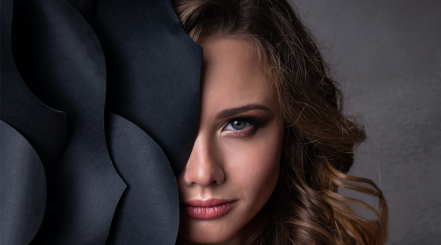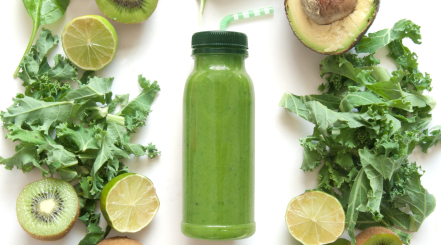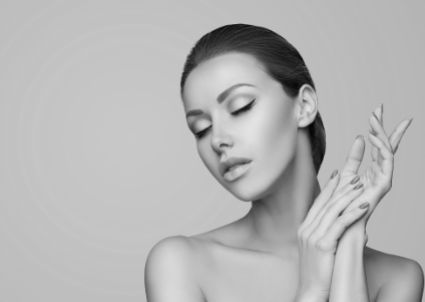Thread lifting - what You should know

Thread lifting (suspension threads) represent a new quality in aesthetic medicine. Their popularity is constantly increasing. Without the use of a scalpel, they provide an effect of lifting and tightening tissues, which previously could only be achieved through surgical lifting. Additionally, they improve the quality of the skin, among others, by stimulating it to produce its own collagen. As a result, procedures using threads yield natural and long-lasting results. In the autumn, we invite you to Dr. Parda's clinic for a non-surgical lifting treatment. What can be expected from it?
What distinguishes thread lifting
Threads are a way to non-surgical lifting. They cause displacement and visual reduction of the skin surface without cutting it. After implantation, thanks to special protrusions ("hooks"), they lift selected areas of soft tissues. Moreover, depending on their composition, they have various additional properties for rejuvenating the skin, e.g., activating the production of collagen, elastin, or hydrating tissues.
Lifting treatments using threads restore a natural look, without unnecessary increase in tissue volume. Procedures are minimally invasive and relatively simple. They do not require general anesthesia and long recovery time. After the procedure, the threads remain invisible. There are also no scars on the skin.
What do thread lifts target
Thread lifting is a solution for both women and men whose problem is sagging and drooping of soft tissues.
Suspension threads are used to correct, among others:
- jawline ("jowls"),
- forehead wrinkles,
- sagging eyebrows,
- "crow's feet,"
- bags under the eyes,
- naso-labial folds,
- "marionette" lines.
Thread lifting is also useful in cases of congenital and acquired facial asymmetry. Doctors also use them in the area of the neck, décolleté, arms, breasts, abdomen, buttocks, and legs. Threads are also used in intimate procedures in aesthetic gynecology.
What are thread lifts made of
Lifting threads are most often dissolvable, made from materials that biodegrade in the body. These compounds are well-known and safe. They have been used for many years in surgical sutures. In aesthetic medicine clinics, threads made of polydioxanone (PDO) are often used. Moreover, absorbable thread lifting may include polylactic acid, caprolactone, or hyaluronic acid. Specialists also use permanent (non-absorbable) threads, e.g., made of polypropylene. They are used, for instance, in breast lifting or chin correction using the hammock method.
PDO thread lifting was popularized by doctors in South Korea. They are also leaders in their use. The first commercial threads with micro hooks for mini-lifting of the face and neck were registered in 1998 under the name Aptos. They were developed by Georgian doctors from the Sulamanidze family.
What does the lifting treatment look like
The procedure using thread lifting takes about an hour. Much of this time is spent preparing the patient for the procedure. It is performed under local infiltrative anesthesia and with adherence to sterility principles.
The procedure does not require incisions on the skin. Most often, the doctor inserts the threads from one point. The number of threads used depends on the patient's skin needs. At least 2-3 threads are implanted per side.
After the procedure, there may be some minor swelling, redness, or soreness. However, one can immediately return to daily activities, remembering to follow the recommendations. Detailed guidelines regarding post-procedure care are provided by the doctor. The most important recommendation is to treat the facial skin gently for the next month.
Contraindications to the procedure using threads are similar to those for all aesthetic medicine treatments.
Results of the lifting treatment
The first effects of the lifting procedure using threads can be seen immediately after its completion. Right after the procedure, the tissues are lifted and tightened. The second part of the procedure's results is delayed. The skin revitalization process initiated by the threads leads to a gradual improvement in its elasticity, tension, firmness, and color.
The thread remains in the tissue for up to 24 months, but the rejuvenating effects of the procedure are visible for longer. This time depends, among others, on the initial condition of the skin, age, and lifestyle of the patient.
Thread lifting at Dr. Parda's clinic
Lifting procedures performed in our facility are preceded by careful qualification. It allows us to exclude the existence of contraindications to the procedure and to thoroughly understand the patient's expectations.
During the procedures, we use APTOS thread lifting. These are lifting threads equipped with multidirectional protrusions. The latest generation of absorbable Aptos threads contains polylactic acid, caprolactone, and hyaluronic acid. These ingredients activate the natural skin revitalization process, leading to the production of its own collagen and elastin. Therefore, the procedure using these threads ensures a simultaneous lifting effect and facial rejuvenation. Additionally, due to the enrichment of the threads with hyaluronic acid, the procedure is associated with a shorter recovery period.








